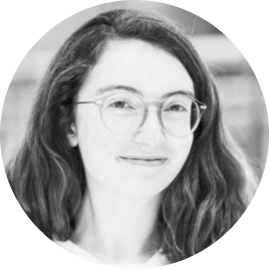Mathilde Fichen

Mathilde Fichen
(Elle/She/They)
About
As of November 2023, I am a Ph.D. candidate at the Conservatoire National des Arts et Métiers (CNAM), affiliated with the laboratory History of Techno-Sciences in Society (HT2S). My Ph.D is under the supervision of Loïc Petitgirard and Camille Paloque-Berges. I received my engineering training at Mines Paristech and Corps des Mines and hold a master’s degree in the History and Philosophy of Science from the University of Lorraine. I previously worked at Inria, the French National Institute for Research in Digital Science and Technology, with the Software Heritage team, contributing to the team’s efforts in building a universal software archive. I am still actively involved with Software Heritage, contributing to the preservation of historical software source code under UNESCO funding.
See my full resume here.
Research interests
My research interests intersect the domains of Computer Science History, Software History, and the preservation of Computer Science heritage.
My Ph.D. research delves into the history of Prolog, a programming language conceived in 1972 at the University of Marseille. Prolog introduced a groundbreaking programming paradigm known as ‘logic programming,’ particularly well-suited for symbolic artificial intelligence applications and knowledge systems manipulation. I will investigate the following questions: under what conditions was Prolog born? How did it spread? Who used the language, and for what purposes? How did Prolog cross the boundaries between academic and industrial spheres?
My study will involve tracing the concrete manifestations of Prolog by exploring the basic conditions of the language’s existence: its formalization into an explicit syntax and semantics in reports or publications, the physical media and conditions that enabled the distribution of interpreters or compilers (such as punch cards, magnetic tapes), the physical or virtual locations of knowledge dissemination (seminars, courses, research exchanges, UNIX networks), and the formal or informal networks of actors that formed around the language. We will reconstruct Prolog’s trajectory from the ground up, using the material or immaterial traces left by the language.
Prolog, however, developed within a specific context—that of artificial intelligence research in the 1970s and 1980s in Europe, and ;ore specifically around two main hubs: the university center in Marseille Luminy and the University of Edinburgh. Understanding the scientific, socio-cultural, and institutional context in which Prolog emerged and evolved will be necessary to analyze and interpret the traces left by the language. Conversely, reconstructing Prolog’s trajectory will shed light on a lesser-known part of the history of European artificial intelligence research, the scientific controversies of the 1970s regarding different AI approaches, and the economic stakes surrounding the first “arms race” in AI during the 1980s between Japan, the USA, and Europe.
Such an approach can be associated with Science and Technology Studies (STS), which focus on the interplay between technology and society. Specifically, the model of the “social shaping of technology” emerged in the 1980s with the foundational work of MacKenzie and Wajcman (MacKenzie and Wajcman 1999). This theory envisions the relationship between society and technology as one of co-construction and mutual influence; technology and society are two inseparable aspects of a single whole. While technology can create new possibilities for social action (for instance, mobile phones facilitating smoother communication), it can also impose constraints and foster new forms of social dependency or exclusion. Technology, therefore, is not a neutral object that society can merely choose to adopt or ignore; rather, it has a certain performativity that contributes to shaping society, alongside economic, political, and cultural factors.
In this light, the material and immaterial manifestations of the Prolog programming language become privileged sites for observing the reciprocal influence of technological innovation and social factors. By focusing on Prolog’s inanimate manifestations (such as related publications, source code, implementations as interpreters or compilers, and physical media for distribution) and the networks of actors that use and incorporate them, we attribute a certain agency to the programming language itself. In particular, the actor-network theory of Bruno Latour, Madeleine Akrich, Michel Callon, and John Law (Latour 1987; Callon 1984) assigns a symmetrical role to animated and inanimate agents within a shared network of interactions. By following the traces left by the Prolog language, we can reconstruct the connections that existed between certain groups of European AI researchers in the 1970s-1980s, identify modes of collaboration and exchange, and study how the use (or non-use) of Prolog as a research subject or tool helped to position researchers within the scientific landscape and its controversies at that time. Such an approach is notably adopted by David Kaiser (Kaiser 2005) in his work on the dissemination of Feynman diagrams in post-WWII physics research, which serves as a valuable source of inspiration for this thesis.
See my Ph.D proposal here (in French).
Communication
- La genèse de Prolog : par delà la syntaxe et la sémantique, la matérialité pas si secondaire d’un langage de programmation, SFHST 2025, 9-11 avril 2025, Nancy
- Prolog, One Language, Two Syntaxes, A historical case Study, HaPoP-6, 25 Octobre 2024, Cambridge
- Panel Patrimoine et Histoire du Code (Panel on Source Code History and Code as Heritage)), Journées du Centre Internet et Société, 24-26 Septembre 2024, Paris
- The socio-historical trajectory of Prolog, a programming language for artificial intelligence in the 1980s, EASST-4S, 16-19 July 2024, Amsterdam
Organization of conferences, workshops, and seminars
- So-Hist-Info, Research Seminar on Socio-History of Informatics, Co-organizor, Every two months, Paris
- Software Heritage 2024 Sympoisum, Organizor, UNESCO, Paris, February 1st 2024
- SWHAP Workshop, Presenting and Curating Legacy Software, Content and Organisation, Inria, Paris, September 14th and 15th 2023
Science mediation and popularization
- Histoires Binaires, Podcast Project (on hold)
- Inria CS Museum, Exhibition panels on CS history
Contact
- 📧 mathilde.fichen [at] lecnam.net
- 📫 HT2S-Cnam, Case 1LAB10, 2 rue Conté, 75003 Paris